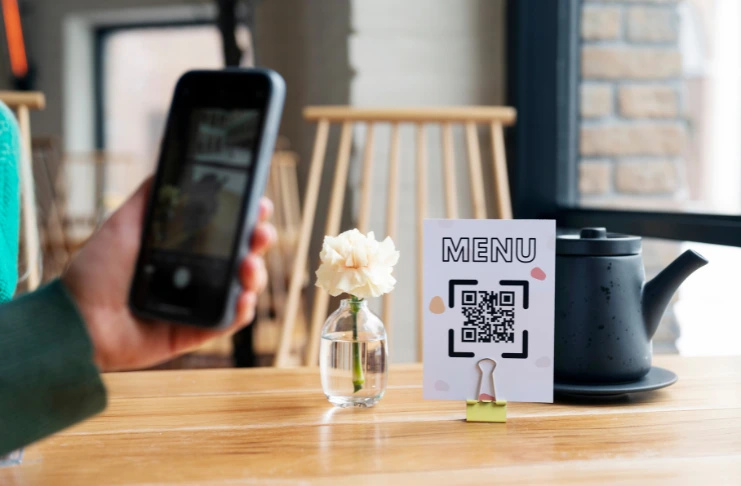It takes more than just great food to launch a successful restaurant in today’s cutthroat culinary scene; you also need creative restaurant startup ideas that can make your establishment stand out. The restaurant business is always changing, which presents chances for businesspeople who can spot and seize new trends. This guide explores cutting-edge restaurant startup ideas that can help transform your culinary vision into a thriving restaurant business.
Whether you’re an aspiring restaurateur or a seasoned professional looking to expand, these restaurant startup ideas will provide the inspiration and practical insights needed to navigate the challenging but rewarding world of food service entrepreneurship.
Market Analysis: Understanding Today’s Dining Landscape
Understanding the current market dynamics is essential before delving into particular restaurant business ideas:
- Changes since the pandemic: Customers now anticipate improved safety procedures, adaptable meal options, and flawless digital experiences.
- Growing prices for food: Strategic sourcing and innovative menu engineering are required.
- Labor difficulties: Promoting innovation in staff retention and operational efficiency
- Focus on sustainability: Growing consumer demand for dining options that are ecologically conscious
- Experience-based dining: Growing desire for more than just delicious food—unique, communal experiences
You can better position your restaurant startup for success in a cutthroat market by being aware of these factors.
Innovative Restaurant Startup Ideas For The Win
1. Small Eateries

A good restaurant startup idea is Micro-Restaurants or Small Eateries. These small restaurants (usually less than 1,000 square feet) concentrate on takeout and delivery, have limited specialty menus, and have little seating.
Why it works:
- Reduced operating expenses and rent
- Decreased need for personnel
- Maintaining constant quality is easier.
- Ideal for cities with lots of foot traffic
2. AI-Enhanced Dining Experiences

A trending and innovative restaurant startup idea is including AI in your dining experiences. Leverage artificial intelligence for menu recommendations, inventory management, and personalized customer experiences and feedback.
Why it works:
- Improved operational efficiency
- Enhanced customer satisfaction through personalization
- Data-driven decision making
- Reduced food waste
3. Interactive Dining Technologies

Implementing tableside ordering systems, digital menus, and interactive dining room experiences can be another restaurant startup idea.
Why it works:
- Reduced order errors
- Faster table turnover
- Enhanced customer engagement
- Labor efficiency
4. Zero-Waste Restaurants

While brainstorming for small restaurant startup ideas, you think about doing something totally out of the box, and zero-waste restaurants is exactly that. Design operations around minimizing food waste through creative menu planning, composting, and circular economy principles.
Why it works:
- Reduced food costs
- Appeal to environmentally conscious consumers
- Positive brand identity
- Potential for press coverage and community support
5. Carbon-Neutral Dining

A sustainable startup idea is for the win nowadays. Develop a restaurant concept that offsets or eliminates its carbon footprint through thoughtful operations.
Why it works:
- Attracts environmentally conscious diners
- Future-proofs against tightening environmental regulations
- Potential cost savings through energy efficiency
- Positive press opportunities
6. Heritage Cuisine Revival

Staying close to home can sometimes do wonders. Focusing on preserving and modernizing traditional recipes from specific cultural backgrounds or regions can be a great restaurant or food business idea too.
Why it works:
- Authentic storytelling opportunities
- Appeal to diners seeking genuine cultural experiences
- Differentiation from generic offerings
- Connection to specific communities
7. Restaurant-Retail Hybrids

Combine dining with retail operations selling house-made products, fresh produce, ingredients, or related merchandise.
Why it works:
- Multiple revenue streams
- Extended customer engagement
- Higher average transaction value
- Brand extension opportunities
8. Culinary Co-Working Spaces

Create membership-based commercial kitchen access combined with cafe or fine dining restaurant elements.
Why it works:
- Steady membership revenue
- Community of food entrepreneurs
- Multiple business lines under one roof
- Shared marketing opportunities
9. Teaching Restaurants

Incorporate cooking classes, workshops, and educational components into your restaurant concept.
Why it works:
- Additional revenue streams
- Community building
- Customer loyalty development
- Enhanced perceived value
10. Subscription Dining Clubs

Create membership models full service restaurants offering special access, regular meals, or exclusive experiences.
Why it works:
- Predictable revenue
- Reduced food waste through pre-planning
- Built-in loyal customer base
- Higher average customer lifetime value
11. Food Trucks 2.0

Elevate the food truck concept with technology integration and strategic permanent locations. One of the biggest examples of a successful food truck is the New York based The Halal Guys. Started as a humble food cart, the brand has now expanded to a Global franchise. With its great food, budget-friendly prices and strong brand identity, The Halal Guys thrive exceptionally by generating $100 million revenue, annually.
Why it works:
- Lower startup costs than brick-and-mortar
- Flexibility to change locations
- Built-in marketing through visibility
- Ability to test multiple neighborhoods
Steps to Launch Your Restaurant

1. Market Research
The cornerstone of any successful restaurant is extensive market research. Start by examining the dining scene in your area to find underappreciated concepts, cuisines, or price ranges.
- Analyze competitors by going to similar businesses and assessing their advantages and disadvantages.
- Utilize demographic information to learn about age groups, dining preferences, and income levels in the neighborhood.
- To test menu items and determine interest, think about using surveys, focus groups, or pop-up events.
- Examine the patterns of foot and vehicle traffic at possible sites at various times of day.
- Look into local seasonal variations that could impact business, such as college schedules or tourism.
Your target customer’s unmet needs should be clearly understood as a result of this research.
2. Develop a Concept for Your Restaurant
Create a complete restaurant identity from your original concept. Create a concise concept statement that sums up your special selling point in one or two sentences.
- Make thorough mood boards that illustrate every aspect of your restaurant’s aesthetic, from the interior decor to the presentation of the plates. Create a brand narrative that appeals to your target market on an emotional level.
- Create a draft menu that strikes a balance between operational viability, profitability, and inventiveness.
- Think about how your idea will be reflected in the takeout packaging, service style, and logo design, among other customer touchpoints.
Your idea should be unique enough to make a statement while still being approachable enough to draw in enough clients.
3. Business Planning
Create a robust business plan that serves as your roadmap and potential funding tool. Include detailed financial projections covering at least three years, with monthly breakdowns for the first year.
- Calculate startup costs including construction, equipment, permits, initial inventory, and pre-opening expenses.
- Develop realistic sales forecasts based on seat count, table turnover, average check size, and occupancy rates.
- Determine your pricing strategy by analyzing food and labor costs to ensure appropriate profit margins.
- Create cash flow projections accounting for seasonality and gradual growth. Outline your organizational structure, including management roles and responsibilities.
- Establish clear metrics for measuring success beyond just revenue, such as customer return rate, social media engagement, and staff retention.
Your business plan should be a living document, regularly revisited and updated as you progress.
4. Location Scouting
Rent is not the only consideration when choosing a location. Examine local demographics to make sure they match your target market. Evaluate visibility, accessibility, and parking availability. Assess the condition of potential spaces, estimating renovation costs and timeline requirements.
- Consider kitchen layout and capacity for your specific menu needs.
- Review lease terms carefully, including length, renewal options, rent increases, and limitations on modifications.
- Research the history of previous restaurants in the space to understand why they succeeded or failed.
- Analyze nearby businesses that could provide complementary foot traffic or potential partnerships.
- Consider future development plans in the area that could affect business.
The right location should balance affordability with the foot traffic and visibility needed for your specific concept.
5. Funding
Obtain enough money using both conventional and unconventional funding techniques.
Create a thorough funding request that includes detailed plans for allocating each dollar.
- Examine conventional bank loans, SBA loans, financing for equipment, and loans for commercial real estate. Think about other funding options like angel investors, private investors, or platforms dedicated to restaurant investments.
- Examine crowdfunding as a means of generating funds and fostering community support.
- Determine your own financial contribution and look into investment opportunities with friends and family.
- Examine vendor financing options for inventory and equipment.
- Create backup financial plans in case of unforeseen costs or slower-than-anticipated growth.
Make a variety of financial scenarios depending on different funding outcomes. Get more money than you anticipate needing because undercapitalization is a major factor in restaurant failure.
6. Choose the right Restaurant Management Software
Choosing the right restaurant management software is essential for improving customer satisfaction, streamlining operations, and boosting revenue. Numerous facets of restaurant management are streamlined by a comprehensive system, which increases productivity and reduces expenses.
Essential Elements of Successful Restaurant Management Software:
- Point of Sale Integration (POS): A POS System enables accurate sales tracking and smooth transactions.
- Inventory Management: Inventory management minimizes waste and avoids shortages by continuously monitoring stock levels.
- Shift Management: Employee scheduling lowers labor costs, ensures optimal coverage, and streamlines staff management.
- CRM: Gathers and examines consumer information to improve loyalty and tailor marketing campaigns.
- Analytics and Reporting: Analytics and Reporting offers information on financial performance, operational effectiveness, and sales trends.
- Sales Tracking: Monitor daily transactions to identify best-selling items and adjust strategies accordingly.
INDUSTRY INSIGHTS
A good Restaurant Management System facilitates seamless transactions and accurate sales, monitors stock levels in real-time, reduces waste and prevents shortages, simplifies staff management, ensures optimal coverage and reduces labor costs and collects and analyzes customer data to personalize marketing efforts and enhance loyalty. It also provides insights into sales trends, operational efficiency, and financial performance, and promote restaurant growth:
| A survey revealed that 38% of restaurant operators plan to invest in technologies like new POS systems and digital signage, while 37% aim to enhance mobile ordering capabilities, to automate restaurant management. The global RMS market is projected to expand from $5.7 billion in 2023 to $26.3 billion by 2032, reflecting a compound annual growth rate (CAGR) of 16.5%. This growth underscores the increasing reliance on RMS to enhance operational efficiency and customer satisfaction. Utilizing workforce management solutions can lead to a 4-5% reduction in labor costs, as these tools assist in optimizing staff schedules and monitoring performance. |
7. Permitting & Compliance
Be proactive in navigating the complicated world of restaurant regulations. Before you sign a lease, find out the specific health department requirements for your location and concept.
- Secure necessary business licenses, including food service permits, liquor licenses, outdoor seating permits, and music licensing.
- Schedule preliminary meetings with health inspectors to understand expectations before construction begins.
- Ensure compliance with building codes, fire safety regulations, and ADA accessibility requirements.
- Obtain proper insurance coverage including liability, workers’ compensation, business interruption, and property insurance.
- Develop food safety protocols and HACCP plans as required.
- Understand and implement labor laws regarding minimum wage, overtime, tip reporting, and paid leave policies.
Create a comprehensive compliance calendar to track permit renewals and inspection dates. Consider hiring a consultant specialized in restaurant permitting to navigate this complex landscape.
8. Vendor relationships
Create dependable supply networks that complement your idea and standards for quality.
- Investigate possible suppliers for every category, such as specialty items, dry goods, meat, seafood, produce, and beverages.
- Consider factors like product quality, dependability, minimum order quantities, delivery dates, and terms of payment when evaluating vendors.
- Build ties with several suppliers to guarantee business continuity in the event of problems.
- While keeping cash flow requirements in mind, bargain for favorable payment terms and volume discounts.
- Think about sustainable and local sourcing choices that can be incorporated into your brand narrative. With each vendor, establish explicit quality standards and return guidelines. Create receiving and inventory management systems.
- Make backup plans in case the supply chain is disrupted.
Strong vendor relationships extend beyond business dealings; take the time to establish a personal rapport with important suppliers who may turn into useful collaborators.
9. Staffing

Find and develop a group of people who will make your idea a reality.
- For each position, create thorough job descriptions with precise responsibilities.
- Based on the anticipated volume, develop a staffing plan that includes the exact number of employees required for each shift.
- Provide competitive pay plans that take tip pooling or service charge models into account.
- Create comprehensive training programs that cover both technical skills and the distinctive service philosophy of your restaurant.
- Write thorough employee handbooks that include policies and procedures.
- Establish a culture of positivity right away by communicating clearly and organizing team-building exercises.
- Create career trajectories to promote growth and retention.
- Install systems for evaluating performance that include tools for providing constructive criticism.
- For recruitment, think about collaborating with culinary schools or hospitality programs.
Keep in mind that being an employer of choice in a competitive labor market requires more than just competitive wages—culture, growth opportunities, and work-life balance are equally important.
10. Marketing & Opening
Build anticipation and awareness before you ever serve your first customer.
- Develop a comprehensive marketing plan with pre-opening, opening, and ongoing strategies. Create a compelling website and claim all relevant social media handles early.
- Develop an email list through pre-opening events and website sign-ups. Implement a content calendar showcasing behind-the-scenes build-out progress.
- Consider “hard hat” preview events for media, influencers, and potential customers. Develop relationships with local food writers, bloggers, and influencers.
- Create partnerships with complementary businesses in your area.
- Design distinctive branded elements from signage to menus to staff uniforms.
- Consider hiring a PR firm for your launch if budget allows.
Test operations with a limited menu and service before your grand opening, and if you are confident that you’re good to go, then Voila! Welcome to the world of Restaurants. We are very happy to see you here and cannot wait to watch this journey unfold.
Conclusion
The restaurant industry continues to evolve, offering exciting opportunities for innovative entrepreneurs. The most successful restaurant startups will be those that combine thoughtful concepts with disciplined execution and adaptability. By leveraging technology, sustainability practices, and creative business models, today’s top restaurant owners and founders can build resilient businesses that thrive even in challenging market conditions.
Remember that the best restaurant business ideas align authentic passion with market demands. Whether you choose to pursue a high-tech ghost kitchen or an intimate heritage cuisine concept, success will come from meticulous planning, consistent execution, and genuine connection with your target customers.
Now are you ready to turn your restaurant startup idea into reality?
Frequently Asked Questions
1. Which fast food in business is most profitable?
The most profitable food businesses include fast food restaurants, trucks, cloud kitchens, and specialty coffee shops due to lower overhead costs. Catering services and meal prep businesses also have high profit margins. Profitability depends on location, target market, and efficient operations.
2. What is the most profitable restaurant business?
The most profitable restaurant businesses are those with low overhead costs, high demand, and scalable operations. Fast-casual restaurants, cloud kitchens, and food trucks often generate high profit margins due to minimal staff, lower rent, and efficient service models. Restaurants that prioritize delivery and digital ordering have higher profitability, as online food sales continue to rise.
3. How do I come up with a restaurant idea?
Start by a small food business and identifying gaps in the market and consumer preferences. Research food trends, analyze local competition, and consider your target audience’s needs. Consider themes like farm-to-table, fusion cuisine, or sustainable dining. Testing your idea through pop-ups, surveys, or market research can refine your concept before launch.
4. What is the cheapest food business to start?
Food businesses with low startup costs include food carts, pop-ups, home-based catering, and cloud kitchens. These models avoid expensive restaurant leases and allow flexibility. Selling baked goods, sandwiches, coffee, or specialty snacks can be highly profitable with minimal equipment. Additionally, pre-packaged meal services or subscription meal kits offer cost-effective ways to enter the food industry without major infrastructure investments.
5. How can I make my restaurant unique?
A restaurant stands out through a strong brand identity, innovative menu, and immersive experience. Consider offering a signature dish, interactive dining experiences, or themed décor. Technology, such as self-ordering kiosks or AI-driven recommendations, can enhance uniqueness
6. What is the most profitable type of restaurant?
Fast-casual restaurants have the best balance of affordability, speed, and food quality, making them highly profitable. Other successful models include high-margin niche concepts (e.g., ramen bars, poke bowls) and low-cost, high-volume businesses like pizzerias. Restaurants that optimize digital ordering, reduce waste, and streamline kitchen operations tend to maximize profitability.
7. What is the best theme for a restaurant?
The best theme aligns with your brand, market demand, and customer experience. Some successful themes include:
Farm-to-table: Fresh, organic ingredients with an eco-friendly focus.
Cultural immersion: Authentic décor, music, and cuisine (e.g., Mediterranean taverna, Japanese izakaya).
Nostalgic or pop-culture inspired: Retro diners, 90s-themed cafés, or movie-inspired restaurants.
Tech-forward dining: Robot servers, digital menus, or VR-enhanced experiences.





